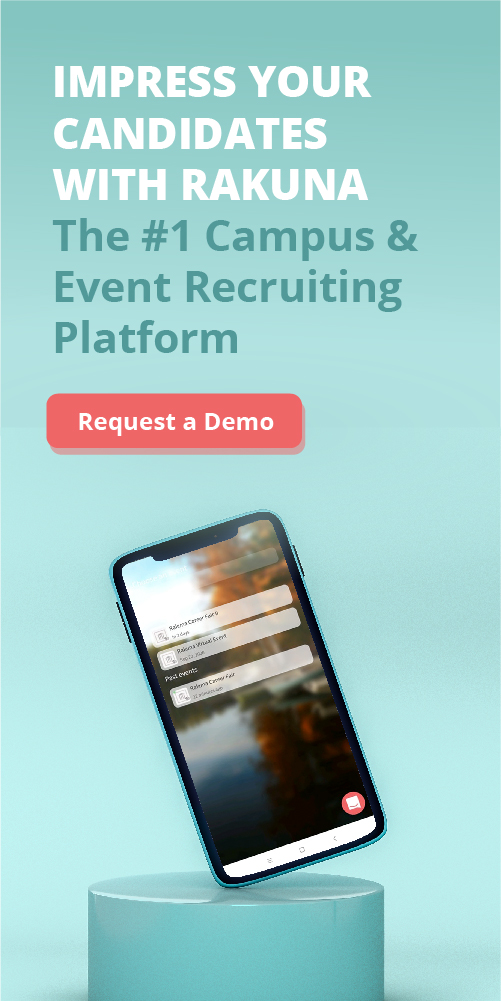One of the most important questions to ask when embarking on any recruiting initiative is, “How do we measure our return on investment?” If you’re going to make your recruitment program the best it can be, you need concrete, measurable goals and solid data on recruitment ROI that shows whether you’re meeting them. Whether a recruiting drive ultimately exceeds expectations or has a lackluster result, the resulting information can make future recruitment efforts far more effective.
Now, how do you measure the success of a recruitment program? Let’s look at a few metrics that can show you what you’re doing wrong and what you’re doing right.
1. Recruitment ROI: Cost Per Hire (CPH)

Cost Per Hire tells you exactly how many dollars you shelled out to bring each new teammate on board. Calculate it by adding all recruiting expenses—think job board fees, recruiter salaries, recruiting tech subscriptions, candidate travel stipends—and dividing by the number of hires in a given period.
Why does it matter? Knowing your CPH helps you benchmark against industry standards (often $4,000–5,000 per hire, depending on role seniority) and spot runaway costs before you’re hemorrhaging budget on underperforming channels.
💡 Best Practice: track CPH monthly, not annually, to catch spikes early (like that time you splurged on a pricey conference).
\text{CPH} = \frac{\text{Internal Costs} + \text{External Costs}}{\text{Number of Hires}}
2. Recruitment ROI: Time to Fill
Time to Fill measures the calendar days from when a job requisition is opened to when an offer is accepted. It’s the “speedometer” of your hiring pipeline. A fast Time to Fill (e.g., 30 days for mid‑level roles) signals you’re tapping the market effectively and not leaving teams shorthanded; a sluggish one (over 60 days) means you risk losing top talent and incurring productivity losses.
For a greenhorn recruiter, this metric is your spotlight on bottlenecks, whether it’s slow hiring‑manager approvals or a clunky interview scheduling process. Keep a rolling average of the last three months to smooth out seasonal hiring swings.
\text{Time to Fill} = \text{Date Candidate Accepted Offer} – \text{Job Requisition Date}
3. Recruitment ROI: Quality of Hire (QoH)
Quality of Hire is another layer of resume filter, it assesses how well new hires perform on the job. You can combine hiring‑manager satisfaction scores, early performance reviews (e.g., at 90 days), and retention milestones (e.g., 1‑year stay rate) into a composite index.
Why bother? Because a low CPH isn’t worth much if hires underdeliver or bail after six months. By measuring QoH, you prove which sourcing channels and screening methods bring in top performers, helping you double down on what works and ditch what doesn’t. Think of QoH as turning anecdotal “they seem great” feedback into hard data.
\text{QoH} = \frac{\text{Hiring Manager Satisfaction} + \text{Performance Score} + \text{Retention}}{3}
4. Recruitment ROI: Offer Acceptance Rate
Offer Acceptance Rate is simply the percentage of offers your team extends that candidates actually sign. If you’re extending 100 offers and hearing “yes!” from 90 candidates, your rate is 90%.
A dip below 75% is a red flag: maybe your compensation packages aren’t competitive, or their interview experience is so negative that people ghost you. Monitoring this metric helps you refine your EVP (employer value proposition) and polish interview feedback loops.
It also signals when you need to consult compensation surveys or coach hiring managers on selling the role.
💡Need to bring up your Acceptance Rate? Check out how to leverage employee advocacy in your Social Media Recruiting Strategy
\text{Offer Acceptance Rate} = \left( \frac{\text{Offers Accepted}}{\text{Total Offers Extended}} \right) \times 100
5. Recruitment ROI: Source of Hire (SoH)
Source of Hire tracks where your best hires come from—referrals, job boards, social media ads, university partnerships, etc. Tag every applicant’s origin in your ATS and compare not just volume but quality (via QoH and retention) and cost (via CPH).
With this data, you’ll discover, for instance, that LinkedIn ads deliver 10% fewer hires than employee referrals but cost twice as much. Armed with that intel, you can reallocate budget to the channels delivering actual ROI and cut the noise from the rest.
6. Recruitment ROI: Candidate Net Promoter Score (cNPS)
cNPS borrows from marketing: you ask candidates, “On a scale of 0–10, how likely are you to recommend our hiring process to a friend?” Subtract the percentage of detractors (0–6) from promoters (9–10). A high cNPS (above +30) means your candidate experience is fire—even those you passed on are left with a positive impression. Why care? A smooth, respectful process builds your brand, fills your talent pipeline via word‑of‑mouth, and reduces ghosting. For new recruiters, this is your pulse on candidate sentiment and a roadmap to tweak touchpoints.
\text{cNPS} = \% \text{Promoters (9–10)} – \% \text{Detractors (0–6)}
7. Recruitment ROI: First‑Year Turnover Rate
First‑Year Turnover Rate measures the percentage of new hires who leave within 12 months. If 20 out of 100 hires exit in their first year, your rate is 20%. This metric shines a harsh light on cultural mismatches, onboarding hiccups, or overpromising in interviews.
High first‑year churn kills momentum and spikes CPH, so keeping this rate below 15% is a solid target. Drill into exit interviews to understand why people leave and partner with HR on retention strategies—think better orientation programs or clearer role expectations.
\text{First-Year Turnover Rate} = \left( \frac{\text{Number of New Hires Who Left in 12 Months}}{\text{Total Hires in that Period}} \right) \times 100
8. Recruitment ROI: Application Completion Rate
Application Completion Rate tracks how many candidates finish your application form after starting it. If 1,000 people click “Apply” but only 600 submit, your rate is 60%. Low completion rates scream “UX nightmare”—maybe your form is too long, mobile‑unfriendly, or asks for redundant info.
A smooth, quick apply increases your top‑of‑funnel volume without upping your sourcing spend. As a new recruiter, run A/B tests on form length and format, and watch your pipeline flourish.
\text{Completion Rate} = \left( \frac{\text{Completed Applications}}{\text{Started Applications}} \right) \times 100
9. Recruitment ROI: Interview‑to‑Offer Ratio
Interview‑to‑Offer Ratio tells you how many interviews lead to an offer. If you conduct 200 interviews and extend 50 offers, your ratio is 4:1. A sky‑high ratio (e.g., 10:1) may indicate poor screening – wasting everyone’s time – while a super‑low ratio (e.g., 2:1) could mean you’re not vetting thoroughly enough.
Aim for a balanced ratio around 4–6 interviews per offer, adjusting based on role complexity. This metric helps you fine‑tune your screening criteria and interview guides for maximum efficiency.
\text{Ratio} = \frac{\text{Total Interviews}}{\text{Number of Offers Made}}
10. Recruitment ROI: Recruitment Funnel Conversion Rates
Recruitment Funnel Conversion Rates break down drop‑off at each stage: sourced → screened → interviewed → offered → hired. By tracking, say, “screened‑to‑interviewed” or “interviewed‑to‑offered” percentages, you pinpoint exactly where talent leaks out.
If you’re screening 1,000 resumes but only interviewing 50, maybe your job description or screening questions are off. If you’re interviewing 50 but only hiring 2, your interview structure might be too rigid. Funnel conversions give you actionable insights to optimize each stage, ensuring fewer candidates slip through the cracks and more move toward “Hired.”
\text{Screen-to-Interview Conversion} = \left( \frac{\text{Candidates Interviewed}}{\text{Candidates Screened}} \right) \times 100
Analytics might feel intimidating at first, but these ten core metrics are your cheat codes to smarter, faster, and more cost‑effective hiring. By mastering Cost Per Hire, Time to Fill, Quality of Hire, and the other eight metrics, you’ll transform from a reactive order‑taker into a proactive talent strategist. Remember: pick a metric or two to start, set realistic benchmarks, and iterate monthly. Before you know it, you’ll be the go‑to recruiter who doesn’t just fill seats but drives measurable ROI. Now go forth, track those numbers, and slay your next talent challenge—no spreadsheet fear required.

Team Rakuna
The Rakuna Team comprises a diverse group of professionals hailing from various corners of the world.
With a passion to enable organizations to hire their next waves of talents, we are dedicated to help organizations stay updated on important recruiting technology and industry best practices.


